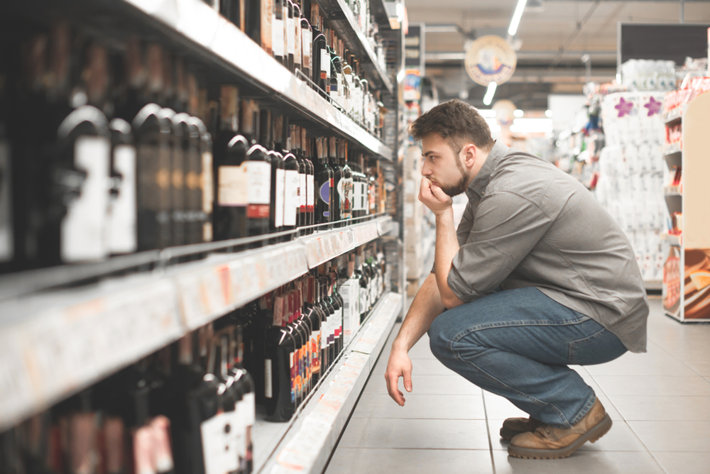Taking a New Look at Alcohol Consumption

We know that there are unintended consequences of alcohol consumption. We know that drinking alcohol can lead to poor choices, drunk driving, fights, public drunkenness, legal issues, unhealthy sexual decisions, bad hangovers, failed drug tests, career problems, family problems, and so on. Yet, as a nation, we continue to drink. Why is that?
A February 28th article in U.S. News brought a whole new, adverse issue to the table that is connected to alcohol consumption. As if we didn’t already have enough of them. In that issue of U.S. News, we learned about the skyrocketing incidence of pedestrian deaths in the U.S. and how thousands of pedestrians are killed by drunk drivers every year. What a wakeup call. What a slap in the face. We knew about drunk driving car accidents, but the issue of pedestrian deaths has always been more or less under-reported and not well discussed.
Unintended Yet Lethal Consequences of Alcohol Misuse

When someone chooses to drink heavily, the possible formulation of addiction or some other kind of dependency is one of the many risks that they take. Above and beyond all the other mind-altering substances used in the United States, none likely presents as much risk to other innocent people as alcohol does. The drinker is taking a considerable risk for himself, but he’s also threatening the lives of those around him.
Case in point: we have soaring statistics on pedestrian deaths in the U.S. According to U.S. News coverage of the Governor’s Highway Safety Association, there were a projected 6,227 pedestrians deaths in 2018. (The numbers are not fully tabulated yet, but that's the estimate.) In 2017, precisely 5,977 pedestrians died in traffic accidents.
According to the GHSA, pedestrian deaths will account for about 16 percent of all traffic deaths in 2018, as compared to only about 12 percent of all traffic deaths in 2008. The simple conclusion? Distracted and intoxicated drivers are killing more pedestrians.
And alcohol, while certainly not the only factor present in these deaths, is still likely the most common influence and predictor in pedestrian deaths. Again according to the GHSA, alcohol impairment on the part of the driver and/or the pedestrian was a factor in about half of all of the fatal crashes that resulted in pedestrian deaths in 2017. Can you imagine, if we took out the alcohol factor, half of all of those lives could have been saved? Looking to the future, if we could remove the alcohol factor from driving and from pedestrian activity, we’d save thousands of lives every year.
What the National Institute on Alcohol Abuse and Alcoholism Says about “Safe Drinking”
The National Institute on Alcohol Abuse and Alcoholism has an excellent assortment of information on the different “levels” of drinking as they are called. According to NIAAA, “Moderate drinking is up to 1 drink per day for women and up to 2 drinks per day for men.”
“NIAAA defines binge drinking as a pattern of drinking that brings blood alcohol concentration (BAC) levels to 0.08 g/dL. This typically occurs after 4 drinks for women and 5 drinks for men—
in about 2 hours.”
Here’s what the NIAAA says about binge drinking (excessive alcohol consumption), “NIAAA defines binge drinking as a pattern of drinking that brings blood alcohol concentration (BAC) levels to 0.08 g/dL. This typically occurs after 4 drinks for women and 5 drinks for men—in about 2 hours.”
The NIAAA goes on to talk about certain people who should avoid all alcohol consumption. The NIAAA references people who plan to drive a vehicle or operate machinery. They should not drink in the time leading up to such an event. Furthermore, people who are on certain medications that would interact with alcohol should not drink. The same goes for people who have medical conditions that would be exacerbated by alcohol consumption. Pregnant women should not drink.
What Does It Really Mean to “Drink Safe?”

The NIAAA has pretty tight restrictions on what constitutes moderate drinking versus over-drinking. But when I look around, I see a lot of alcohol problems among people who are not necessarily addicted to alcohol. So I don’t know that there is such a thing as “drinking safe.” There is indeed no such thing for a recovering addict. Alcohol consumption will carry with it some risk. Granted, the risk is exacerbated with the more drinks consumed, but the risk is a present factor no matter the quantity consumed.
Drinking safe means minimal alcohol consumption—if any. Anyone who has struggled with addiction in the past, even if their drug of choice was not alcohol, should not drink. Why play with fire when one has already been burnt? And for the rest of us, it is one thing to strike a match now and then. It is another thing entirely to start a bonfire and throw gasoline on it.
Let’s commit as a nation to minimal or no alcohol consumption. Our country needs to change here. We should all cut back on alcohol consumption habits. This would be a solidarity movement towards life-saving and towards preventing alcohol addiction and other adverse effects of drinking. This would be a worthwhile endeavor.
How We Should All Approach Alcohol Consumption
Richard Retting (the author of the report from the GHSA mentioned earlier) spoke on a multifaceted approach to reducing pedestrian deaths. He said, “We have a range of proven infrastructure, engineering, and behavioral strategies that we know can reduce pedestrian deaths. It is also important to conduct law enforcement and safety education campaigns now to ensure drivers and pedestrians can safely coexist. It’s crucial to do everything we can to protect pedestrians utilizing a broad approach.”
I can get on board with what he’s saying, but I think it will take a lot more than that to reduce this problem. We need to work together as a nation of united communities to curb excessive drinking across the boards.
While Retting and his team work on how to create the safest conditions possible for drivers and pedestrians alike, let’s have the rest of us work on preventing excessive drinking, on educating our family members and loved ones on why they should not drink often, helping friends and family members if they do have a drinking problem, and on reducing overall alcohol consumption in the U.S. We just don’t need that much alcohol. The risks for accidents, disease, and loss of life are just too significant.
Sources:
- https://www.usnews.com/news/health-news/articles/2019-02-28/us-pedestrian-deaths-hit-30-year-high-in-2018-report
- https://www.niaaa.nih.gov/alcohol-health/overview-alcohol-consumption/moderate-binge-drinking
Reviewed and edited by Claire Pinelli, ICAADC, CCS, LADC, RAD, MCAP


 ®
®